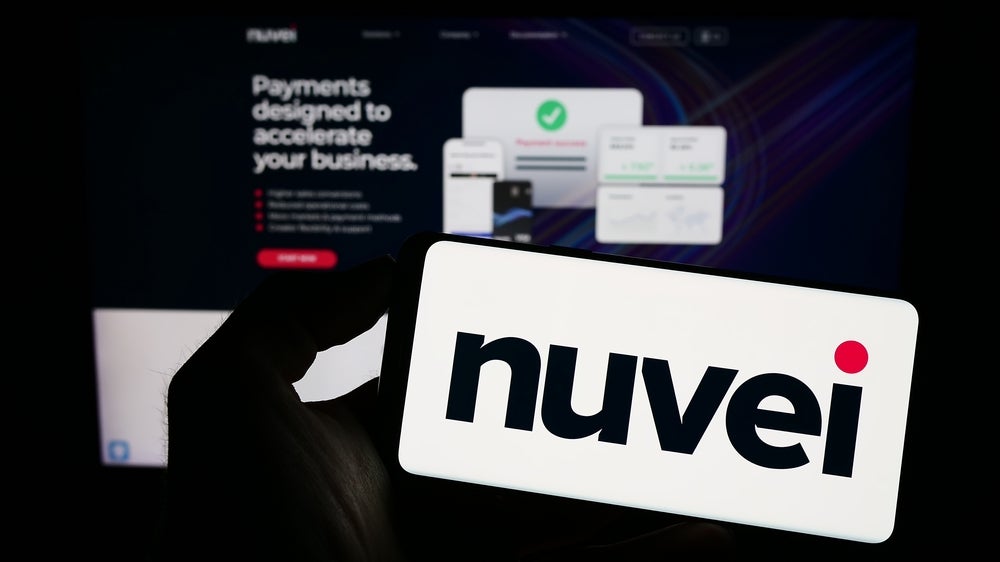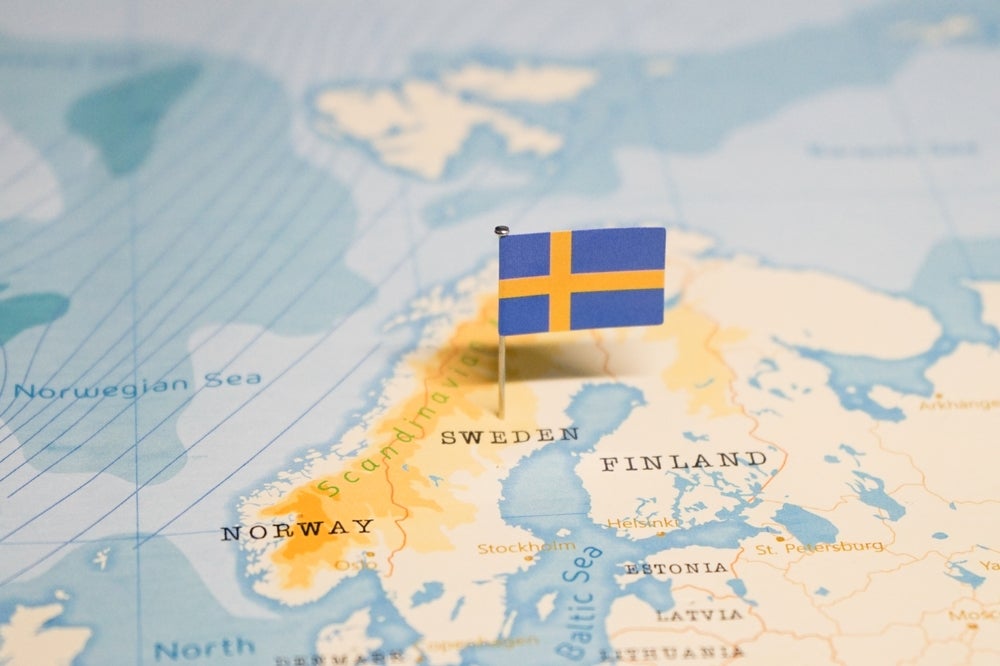
A surge in the use of debit
cards and the widespread adoption of online banking has enabled
Sweden to make impressive progress in eliminating paper-based
payments in recent years. But as Victoria Conroy reports, reducing
the use of cash for out-of-pocket spending remains the big
challenge.
 Migrating society
Migrating society
from cash to electronic payments has long been a key focus of
central banks, but few have devoted as much time and effort
analysing the social dynamics at work as Sweden’s central bank, the
Sveriges Riksbank. A key motivation for the Riksbank’s research is
Sweden’s persistently high use of cash. Cash is still used to a
greater extent in Sweden than in any other Nordic country.
Electronic payments are
nevertheless eroding the use of cash. An indicator of this is the
share of banknotes and coins in circulation, which since the 1950s
has fallen from about 10% of GDP to about 3.5% of GDP.
Over the past 15 years, the rate of
decline in the use of cash has slowed, though there are good
indications the use of cash is still falling.
How well do you really know your competitors?
Access the most comprehensive Company Profiles on the market, powered by GlobalData. Save hours of research. Gain competitive edge.

Thank you!
Your download email will arrive shortly
Not ready to buy yet? Download a free sample
We are confident about the unique quality of our Company Profiles. However, we want you to make the most beneficial decision for your business, so we offer a free sample that you can download by submitting the below form
By GlobalData
Cash on the
wane
 Another key
Another key
indicator is cash withdrawals from ATMs. According to the European
Central Bank (ECB), cash withdrawals in 2007 totalled SEK316bn
($36.5bn), but by 2009 this number had fallen to SEK224bn, despite
the number of ATMs increasing from 2,816 in 2005 to 3,319 in
2009.
The number of POS terminals has
grown significantly in Sweden, increasing from 87,133 in 2000 to
over 217,000 in 2009. In terms of the number of POS terminals per
capita, the Nordic countries are now very close to one another. The
increase in POS terminals has been paralleled by a substantial
increase in the use of payment cards in Sweden, with the total
number of cards rising from 13.8m in 2000 to 18.9m in 2009.
Card transactions in Sweden
overtook ATM cash withdrawals in 2002 and now out-number them by
almost four to one. The debit card dominates in Sweden, having
risen from 6.65m in 2005 to 8.17m by 2009, while credit cards in
circulation have risen from 3.61m in 2005 to 5.15m in 2009.
An area of Sweden’s payments system
that has seen considerable change as a result of the swing to card
payments is the giro system, which comprises Bankgirocentralen
(BGC) and PlusGirot. BGC, a service established by banks to
facilitate credit transfers between bank accounts, primarily
handles retail payments. The six banks that own BGC account for
about 80% of payments activity in Sweden. A further 13 of the 126
banks registered in Sweden are BGC members.
 PlusGirot,
PlusGirot,
founded in 1925 as Postgirot by the Swedish postal service, is now
owned by Swedish bank Nordea. Postgirot, which since 2002 has been
a member of BGC, handles low-value retail payments and large-value
payments.
Over the past few years, more card
payments have been made than giro transfers, direct debit and other
credit transfers. Indicatively ECB data shows the number of credit
transfers fell from 65.4% of total non-cash payments in 2000 to
31.8% in 2009.
However, the medium through which
direct credits are transacted is undergoing significant change as a
result of the advent of internet banking. In some banks, more than
half of the credit transfers are now internet-based and this
percentage is increasing rapidly. This trend reflects a very high
usage of internet banking in Sweden.
According to the country’s
statistics bureau Statistiska Centralbyrån (SCB), two-thirds of all
Swedes aged between 16 and 74 used an internet bank during the
first quarter of 2008. This finding is similar to results of a 2007
study by Deutsche Bank which found some 60% of all Swedish adults
banked online. This ranked Sweden fourth in Europe behind the
Netherlands, Finland and Iceland.
Internet a key
driver
A major driver of internet banking
growth is Sweden’s enthusiastic adoption of the internet and
broadband connections.
According to the SCB, 78% of
Sweden’s adult population had broadband in their homes in late
2008, up from 44% in 2005. High internet usage has also prompted
Swedes to become avid online shoppers.
This was highlighted in a study by
the SCB which revealed that between April 2007 and March 2008 over
half of all adults had shopped online.
Overall, Sweden has been highly
successful in eliminating paper-based transactions. Between 2000
and 2009, ECB data reflects a 38% fall in the number of paper-based
transactions, from 154m to 95m, or 10.3 per capita. The value of
paper-based transactions fell by a far more significant 74% to
SEK346bn. Paper-based instruments declined from 14.2% of all
transactions by value in 2000 to 3.1% in 2009.
Little of the decline in
paper-based payments can be attributed to lower use of cheques,
which have long played a minor part of Sweden’s payments market.
Indeed, in value terms, cheques increased marginally as a
proportion of total payments between 2000 and 2007, from 0.2% to
0.5%.
The number of cheques transacted in
2009 was just over 300,000. Once a major factor in Sweden’s
payments system, cheques accounted for 70% of non-cash transactions
in 1990.

Clearing
systems
There are a number of payment
systems in Sweden. Banks that have accounts with the Sveriges
Riksbank can make payments to and from each other through RIX, the
Riksbank payment system for large-value payments.
The Riksbank owns and operates the
RIX payment system. RIX is sometimes referred to as the ‘hub’ of
Sweden’s payment system since it enables its participants – banks,
clearing organisations and others – to make transfers between each
other’s accounts held with the Riksbank. These transfers can refer
to the banks’ and clearing organisations’ own financial
transactions or their customers’ transactions.
By and large, all payments in SEK
that are not made internally within an individual bank are handled
in RIX. The settlement of payments in RIX is carried out according
to the principle of real-time gross settlement (RTGS), whereby
participants’ accounts are debited and credited electronically.
The fees charged to participants
must cover the Riksbank’s costs for RIX. The fee structure is based
on a fixed and a variable component. The turnover per week, about
SEK3,300bn, almost corresponds to Sweden’s entire GDP.
At the end of 2009, there were 22
RIX participants, and the number of payments processed in RIX
during the year was, on average, just under 10,200 transactions per
day, an increase of 27% compared with the previous year. The
average daily turnover was around SEK660bn. Adjusted for
transactions related to the Riksbank’s special loan programme, this
means a 12% decrease compared with the previous year.
There are two main payment hubs for
low value payments. Bankgirot is the jointly bank-owned hub, while
PlusGirot is the other hub, a fully-owned subsidiary of Nordea.
According to Nordea, almost all Swedish companies have Bankgirot
and/or PlusGirot accounts for receivables, and often the remitter
chooses which type of payment to make.
According to Nordea, B2B payments
are fairly equally divided between PlusGirot and Bankgirot. For
Bankgirot payments, a corporate will generate payment instructions
in its own ERP system and then feed Bankgirocentralen (BGC)
directly. BGC offers a number of direct communication channels
(EDIFACT, proprietary formats and communication via the internet).
Vice-versa, remittance advice will be received via the same
channel. BGC is the main intermediary of retail (low value)
payments between the banks.
The BGC system is an open one,
which means that it can process transfers between all of the
participating banks. The system is based on bankgiro numbers, which
are not account numbers but rather a type of address that points to
a bank account.
In 2009, 802m payment transactions
were mediated through the bankgiro system to a total value of
SEK9,192bn. The payments passing through the system may have been
started in many different ways, for example via an internet bank or
over the counter.
BGC also manages debit
transactions; that is, those initiated by the payment recipient
rather than the payment sender. This is the case with regard to
direct debit payments, for instance. Examples of other types of
payment handled by BGC include card payments and cash withdrawals
through ATMs.
The number of payments implemented
in BGC’s payment system is increasing but at a rate well below that
of previous years. In 2009, a total of 802m payment transactions
were mediated through BGC’s payment system, an increase of
approximately 4% compared with 2008. This figure can be
compared to the average increase of 10% for the period 2003 to
2009.
The number of payments implemented
via Bankgiro products increased by an average of 13% per year
during the period 2003 to 2009. Payments via Dataclearing increased
by an average of approximately 5% per year during the equivalent
period.
The number of payments via
Privatgirot has thus remained relatively constant over the same
period. The number of payments from Privatgirot and Dataclearing is
relatively low compared with those mediated via Bankgiro
products.
The total value of payments
processed through BGC’s payment system during 2009 amounted to
SEK9,192bn. This was a decrease of 2% compared with 2008 and,
considering the increased volume of payments, implies that the
average amount per payment has decreased by approximately 10%
compared with the previous year.
According to BGC, this major
decrease has been caused by lower production and consumption rates
due to the less favourable economic climate. The value of payments
via Bankgiro products and Dataclearing has increased by an average
of approximately 11 and 9% respectively, per year during the period
2003 to 2009.
The value of the payments processed
by Privatgirot is falling every year and has declined by a total of
approximately 55% during the equivalent period.
During 2009, the focus was upon the
project of transferring BGC’s payment platform to VocaLink. In
autumn 2007, BGC decided to start strategic cooperation, mainly
concerning BGC’s payment system, with VocaLink in the UK, whose
activities include operating the British retail payment system,
BACS.
The objectives of this cooperation
are to offer products to Bankgiro at a lower price and to meet
market demand for new payment products. BGC will retain its current
role in relation to the banks, their clients, and authorities.
On 15 May 2008, BGC and VocaLink
signed a Master Services Agreement (MSA) to regulate the
outsourcing of BGC’s payment system to VocaLink. In its capacity as
supplier, VocaLink will manage the IT operations of BGC’s payment
system.
The programme for the transfer of
Bankgiro products to VocaLink’s platform started on 8 May 2008.
Stage One, with start of operations in February 2010, includes new
direct debit and issuer payments, together with general joint
functions for clearing and settlement, cover checks and crediting
documentation.
Stage Two, with start of operations during the first six months
of 2011, includes the remaining products in BGC’s payment system
and Dataclearing.








